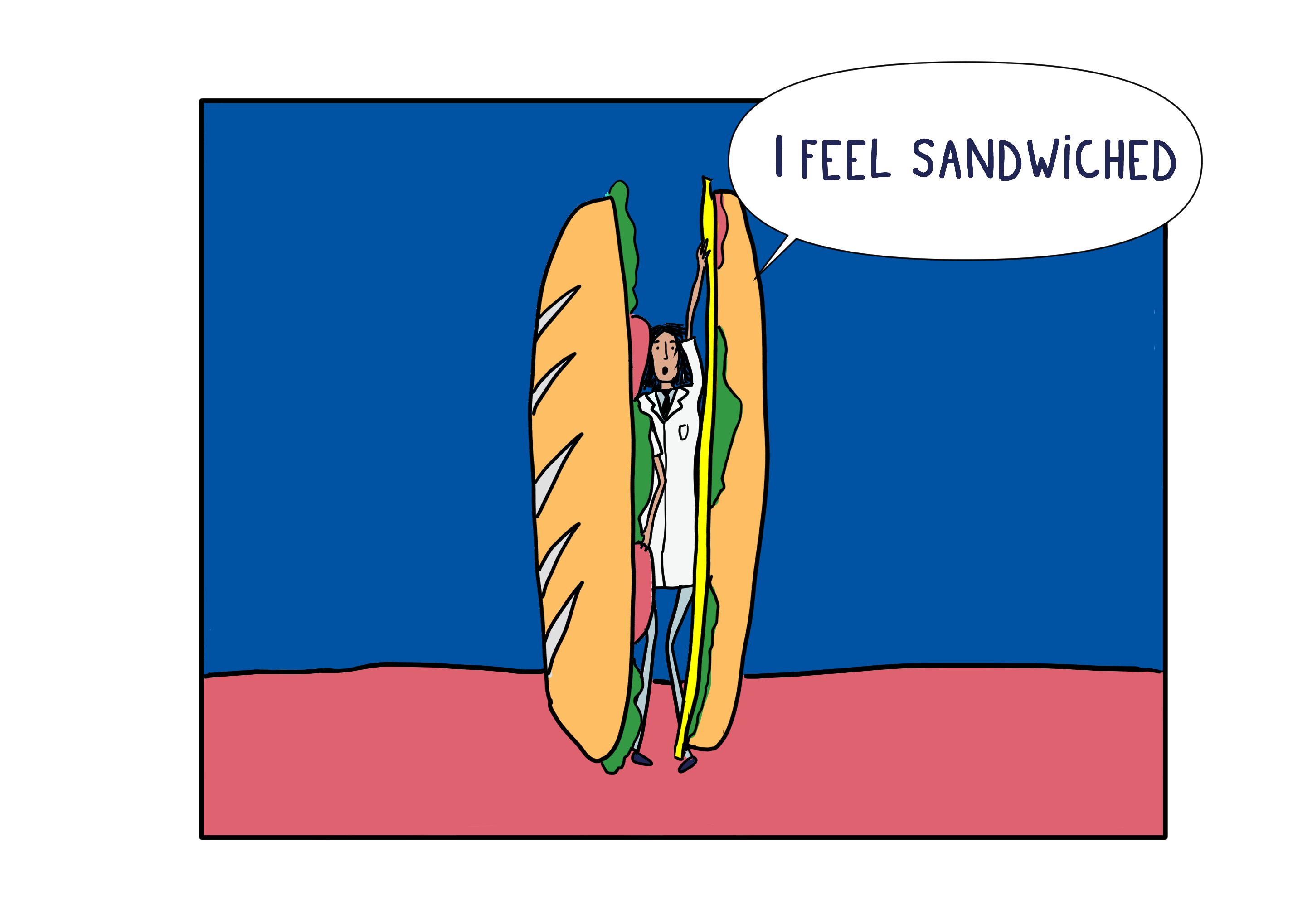
Part 2: The organisation in flow with Obeya
Obeya. Is it another new LEAN trend or an indispensable foundation for every organization? In this 5-part blog series, we delve into the wonderful world of Obeya. Discover how Stanwick utilizes this approach in future-proof transformations. In the previous blog we shared an introduction of Obeya. In part 2 of this series, we clarify the foundation of Obeya.
Leaders in organizations often feel overwhelmed, as if they are being sandwiched. They drown in the everyday chaos of firefighting and decision-making. The information flow they face daily is immense. While we can't eliminate the complexity of the current era, we can reorganize ourselves to better cope with it. The fundamental principle of the Obeya approach is to bring together the right people at the right level to make the right decisions.
When building this foundation, we consider three elements:
- Team structure
- Meeting structure
- Escalation and feedback flow
Team structure: how to approach with obeya?
One of the reasons why leaders, especially first-line managers, feel overwhelmed is that all decisions converge on them. This is due to the indirect communication lines within our hierarchical model. In the Obeya approach, we don't transform the entire organizational model into a fully holocratic model, but within the Obeya room, we apply the same mindset and form autonomous multidisciplinary teams with their unique playing field. What decisions should we be able to make at our level? Who do we need for that? Who should provide us with ad hoc support?

Fig. 1 Fictional example of a sub-organization within a production department
This way, we create direct communication lines, a flat structure, and involvement in decision-making. Within Obeya, we no longer refer to functions but roles. If the role that needs to escalate to the next level is not present, someone else from the team takes on that role.
Meeting structure: how to approach with Obeya?
Bringing the right people together is not the only important factor. To achieve an efficient Obeya, the right things must be discussed at the right time. Here are some factors to consider:
- Scope of the meeting: Limit the content to make it relevant to every participant. It's better to have two short meetings than one long meeting that is only partially relevant.
- Frequency: Operational teams will need to collaborate more frequently than strategic teams due to the nature of their problems and the actions they need to take.
- Timing: We work with fixed times so that every participant can join the necessary meetings within the escalation process.
This creates rhythm, regularity, and peace of mind. The Obeya meeting structure is sacred and takes priority over ad hoc meetings. This way, we establish predictability and certainty. Of course, this Obeya culture needs to gradually develop over time.
Escalation and feedback flow: how to tackle it with Obeya?
Finally, we need to connect the different teams and levels through a proper escalation and feedback flow. This flow is formed, on one hand, by the Obeya system itself, which we will address later in this blog series. On the other hand, a natural escalation flow arises by assembling teams in such a way that one role physically escalates, as shown in Figure 1.
The pitfall when establishing this Obeya structure is the current hierarchical model. It's difficult for us to let go of control, so we cling to existing cross-functional meetings. Therefore, organizations must find the right balance between integration within multidisciplinary teams and maintaining functional connectivity within the domain of expertise. If we fail to do this, we end up with meeting after meeting, which defeats the purpose of the Obeya concept.

Fig. 2 Example of an Obeya escalation and feedback flow in a production department
In the next part of this blog series, we will explain how we establish decision-making authority and roles within the Obeya team.
Obeya - what are the roles? Read more in part 3
In the last 2 parts we will take you further towards the Obeya fundaments. What are the success keys and what are the pitfalls in an Obeya transformation journey?
Obeya - what leadership do we expect? Read more in part 4
Obeya - how do we setup the Obeya room? Read more in part 5
Did you miss part 1 of the blog series about Obeya?
Obeya - why to use obeya? what is Obeya? how does the obeya transformation project works?
Curious to learn more? Stay tuned and follow us.
If you have a specific question, visit our website or contact us. Stanwick supports you in your future-proof transformation!
Annelies Boecxstaens


